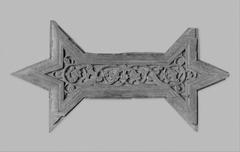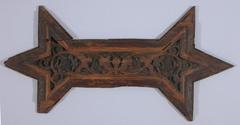
Mosque of Ibn Tulun: Visiting Hours, Tickets, and Historical Significance in Cairo, Egypt
Date: 14/06/2025
Introduction
The Mosque of Ibn Tulun is a cornerstone of Cairo’s Islamic and architectural heritage. Constructed between 876 and 879 CE by Ahmad Ibn Tulun, then governor of Egypt under the Abbasid Caliphate, this monumental mosque not only served as a symbol of political autonomy but also introduced architectural innovations that influenced both Islamic and European design. Today, the mosque stands as the oldest in Cairo preserved in its original form, offering visitors a unique opportunity to experience a tangible link to the city’s 9th-century past (Touring in Egypt; Egypt Tours Portal).
This guide provides a detailed overview of the mosque’s history, architectural highlights, visiting hours, ticket details, accessibility, travel tips, nearby attractions, and answers to frequently asked questions, ensuring you have all the information needed for a rewarding visit.
Table of Contents
- Introduction
- Historical Background
- Visitor Information
- Travel Tips
- Frequently Asked Questions (FAQ)
- Conclusion and Call to Action
- References
Historical Background
Foundation and Historical Context
The Mosque of Ibn Tulun was commissioned by Ahmad Ibn Tulun, who sought to establish a new, independent capital—Al-Qata’i—in 870 CE as a statement of autonomy from the Abbasid authority in Baghdad. The mosque formed the spiritual and civic heart of this new city, strategically placed between Fustat and the later Fatimid capital, Cairo (Touring in Egypt; Architecture Courses).
Significantly, the mosque was designed by Saiid Ibn Kateb Al-Farghany, a Christian Orthodox architect—a testament to the religious and cultural pluralism of the period (Egypt Tours Portal).
Architectural Innovations and Influence
The mosque’s design reflects the architectural vocabulary of the Abbasid period, most notably inspired by the Great Mosque of Samarra. Key features include:
- Hypostyle Plan: Covering over 26,000 square meters, the mosque’s vast open courtyard is surrounded by arcaded halls supported by piers—an innovation over the use of columns, later adopted in Gothic architecture (egypttoursplus.com; egypttripsguide.com).
- Spiral Minaret: The mosque’s most iconic feature, its external spiral staircase minaret, is unique in Egypt and offers panoramic views over Cairo (Hurghada Lovers).
- Material Use: The use of baked brick and stucco, instead of the more common stone or mudbrick, set a precedent for later Islamic architecture.
- Pointed Arches: Systematic use here would later become a hallmark of both Islamic and European Gothic architecture (Egypt Tours Portal).
Preservation and Endurance
Despite the destruction of Al-Qata’i and the fall of the Tulunid dynasty in 905 CE, the mosque survived and underwent significant restoration during the Mamluk period, particularly under Sultan Lajin in 1296 CE. Since then, the mosque has remained largely unaltered, making it a rare example of enduring early Islamic architecture (Trips in Egypt).
Visitor Information
Visiting Hours and Entry
- Hours: Open daily from 8:00 AM to 5:00 PM. Hours may vary during religious holidays or special events (egypttoursplus.com).
- Tickets: Entry is free for local residents; international visitors may pay a small fee (approximately 30 EGP). Donations are appreciated, especially for climbing the minaret (egypttripsguide.com).
Guided Tours
Guided tours—bookable through local operators or at the mosque—offer deep insights into the mosque’s historical and architectural significance. Audio guides and brochures may also be available.
Accessibility and Etiquette
- Accessibility: Main areas are accessible via ramps and wide pathways, though the minaret and some sections involve stairs. Wheelchair users can navigate much of the mosque but may find the minaret inaccessible.
- Dress Code: Modest attire is required. Women should cover arms, legs, and hair with a scarf; men should wear long pants and sleeves.
- Etiquette: Remove shoes before entering prayer halls; photography is permitted but respect worshippers’ privacy and avoid flash during prayers.
How to Get There
The mosque is in the Sayyeda Zeinab district:
- Taxi/Ride-Hailing: Easiest and most direct option.
- Public Transport: Cairo Metro to Sayyeda Zeinab or Saad Zaghloul stations, then a short taxi ride or 15–20 minute walk.
Nearby Attractions
Within walking distance are:
- Gayer-Anderson Museum: Adjacent to the mosque, famous for its unique architecture and artifacts.
- Coptic Museum and Hanging Church: Located in Old Cairo.
- Sultan Hassan Mosque and Al-Azhar Mosque: Essential stops for those interested in Islamic Cairo.
- Khan El Khalili Bazaar: Ideal for experiencing Cairo’s bustling markets.
Travel Tips
- Best Time to Visit: Early morning or late afternoon for optimal light and fewer crowds.
- Facilities: Bring water and sun protection; restroom facilities are basic.
- Photography: Early or late hours provide the best natural lighting for photos.
- Guides: Consider hiring a guide for in-depth understanding.
Frequently Asked Questions (FAQ)
Q: What are the visiting hours?
A: Daily from 8:00 AM to 5:00 PM; check for changes during religious holidays.
Q: Is there an entrance fee?
A: Free for locals; small fee for international visitors. Donations are welcome.
Q: Can I climb the minaret?
A: Yes, for a small fee, but the climb is steep.
Q: Is the mosque wheelchair accessible?
A: Main areas are accessible, though some parts (like the minaret) are not.
Q: Are guided tours available?
A: Yes, through local operators or on-site.
Q: Is photography allowed?
A: Yes, but avoid photographing people without permission, especially during prayers.
Conclusion and Call to Action
The Mosque of Ibn Tulun is a living testament to Cairo’s Islamic and architectural legacy. Whether your interest lies in history, architecture, or spiritual ambiance, a visit here offers a profound experience. Plan your trip by checking the latest visiting hours and ticket information, dress appropriately, and consider a guided tour for a richer visit. Extend your exploration to nearby historical sites to fully immerse yourself in Cairo’s vibrant past.
For the latest updates, travel tips, and exclusive content on Cairo’s historical sites, download the Audiala app and follow us on social media.
References
- Touring in Egypt, 2024, ‘Ibn Tulun Mosque’ (https://touringinegypt.com/ibn-tulun-mosque/)
- Architecture Courses, 2024, ‘Ahmad Ibn Tulun Mosque: Architect’s Insight, History, Faith and Design’ (https://www.architecturecourses.org/learn/ahmad-ibn-tulun-mosque-architects-insight-history-faith-and-design)
- Egypt Tours Portal, 2024, ‘Ibn Tulun Mosque’ (https://www.egypttoursportal.com/ibn-tulun-mosque/)
- Trips in Egypt, 2024, ‘Mosque of Ibn Tulun’ (https://www.tripsinegypt.com/mosque-of-ibn-tulun/)
- Hurghada Lovers, 2024, ‘Mosque of Ibn Tulun, Cairo Egypt’ (https://hurghadalovers.com/mosque-of-ibn-tulun-cairo-egypt/)
- egypttoursplus.com, 2024, ‘Mosque of Ibn Tulun’ (https://www.egypttoursplus.com/mosque-of-ibn-tulun/)
- egypttripsguide.com, 2024, ‘Mosque of Ibn Tulun Cairo’s Oldest Mosque’ (https://egypttripsguide.com/mosque-of-ibn-tuluncairos-oldest-mosque/)
- Rotana Egypt Travel, 2024, ‘Ibn Tulun Mosque’ (https://www.rotanaegypttravel.com/blog/cairo-attractions/ibn-tulun-mosque)



































